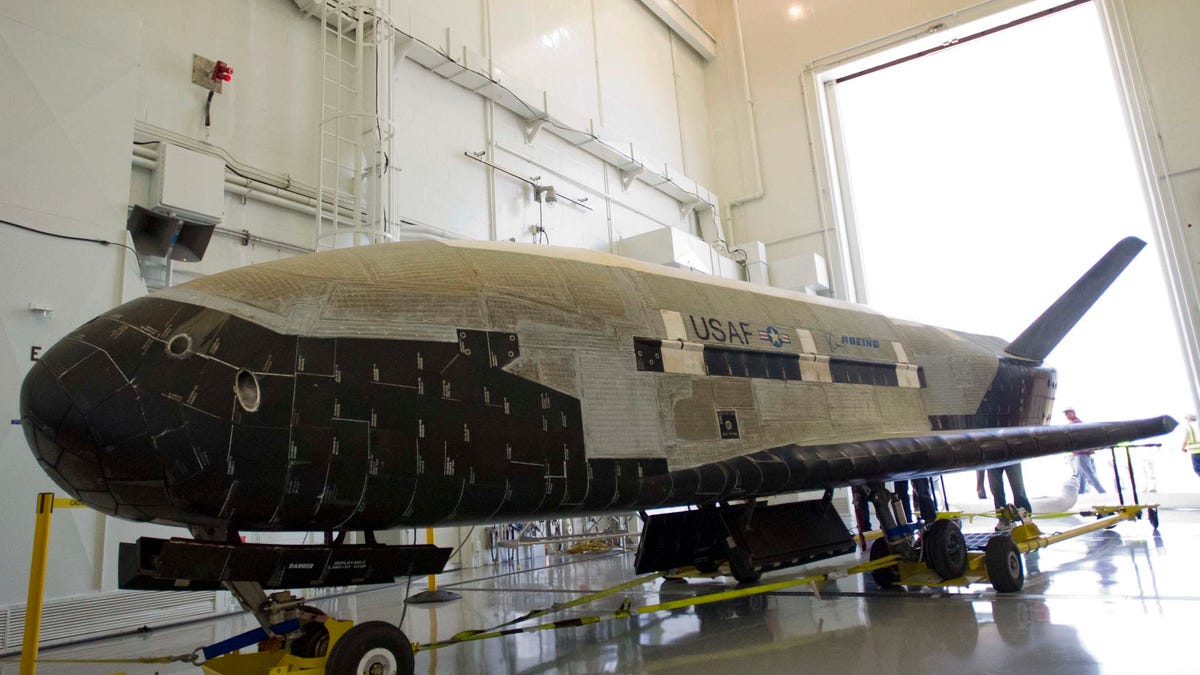Secretive X-37B space plane ready for next flight
An Atlas V rocket carrying the unmanned craft, which looks like a miniature space shuttle, has the green light for a planned liftoff Tuesday. Just don't ask what it's up to.

It's round three for the mysterious X-37B space plane.
An Atlas V rocket carrying the unmanned craft, which looks like a miniature space shuttle, has gotten clearance for a planned liftoff tomorrow at just after 10 a.m. PT from the Cape Canaveral Air Force Station in Florida. [Update, December 11 at 10:21 a.m. PT: The Associated Press reports that the rocket carrying the X-37B has launched.]
If the previous two trips into space are any indication, don't expect the X-37B to come home anytime soon -- or for the U.S. Air Force to say much about what the vessel is up to. Is it spying? Might it eventually carry weapons? Is there extra cash lying around at the Pentagon for joy rides? Maybe it's a psychological operations ploy to mess with government types in Beijing or Tehran or Pyongyang! The speculation has risen to meet the near silence.
The one detail of any substance that the Air Force and X-37B maker Boeing have shared is that the previous X-37B trips into space went on and on and on. The first, which ended in December 2010, lasted 224 days, and the second, which ended last June, endured for 469 days, or a year and four months.
Like the space shuttle, the 29-foot-long X-37B can return to Earth for reuse, and is designed to do so autonomously. The Air Force does acknowledge that this return capability allows it to "test new technologies" with less of a risk -- and at a more reasonable cost, as aerospace missions go -- than other programs might allow. And this would account for the spacecraft's other name: the Orbital Test Vehicle.
A blurb on the Web site of the United Launch Alliance, the Boeing-Lockheed joint venture responsible for the Atlas V liftoff, puts it this way:
The OTV, also known as the X-37B, supports space experimentation, risk reduction and concept of operations (CONOPS) development for long duration and reusable space vehicle technologies.
The Air Force had hoped to get the spacecraft back into orbit in October, but unrelated problems with the separate ULA launch of a GPS satellite (aboard a Delta rocket) pushed the schedule back. "All credible crossover implication from the Delta anomaly for the OTV-3 Atlas vehicle have been thoroughly addressed and mitigated, culminating in the flight clearance decision for the OTV-3 launch," ULA said in a press release Friday.
There are two OTV craft in the X-37B fleet. The one scheduled for launch tomorrow is OTV-1, which carried out the first of the flights to date. Yes, confusingly the numbers in the the OT-x designations seem to be used loosely both for the spacecraft (-1 and -2) and for the missions (-1, -2, and now -3).
And who knows? Maybe the third time is the charm for getting a little more information out of the Pentagon about what the little spacecraft is up to.
Update, December 11 at 6:35 a.m. PT: You've asked, and here it is: the spec sheet, such as it is, for the X-37B, courtesy of the U.S. Air Force. Boeing, meanwhile, has its own overview.

